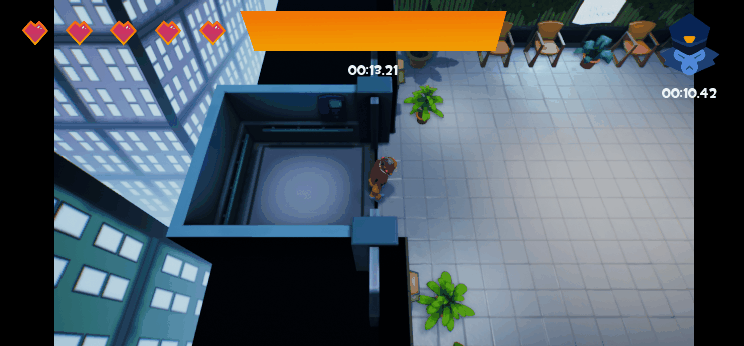Giving the player enough space
The game-feel of this game was chaos and freedom, thus giving the player space to move freely and make mistakes was important. I made sure that each door frame was at least twice as wide as the player character. Also, I kept in mind that the hallways and rooms had to be at their narrowest, 3 times as wide as the player character. Finally, I had to remember that if a room was narrow in one dimension, it had to be wider in the other.
In the beginning, this process required a lot of trial and error. Fact that can be seen in the type of rooms that were present in the different iterations I had to make for the 1st level. At that moment I wast sure how fast the player character would be nor the reach of her actions.
Level 1, Iteration 1, Sketch
Level 1, Iteration 2, Sketch
Level 1, Iteration 3, Sketch
Guiding the Player
In the micro sense of each room, I place the objects in a way that the players have at least one path they can take. This path allows them to destroy everything without having to stop. In the macro sense of the level, I guide the player to show them a good path they can take to finish the level quickly while also teaching them the mechanics of the level.
An example of the micro-guidance in the first level can be seen in the security room. Here the objects are placed in a way that allows the player to keep their momentum while exploring the whole room. This ensures the player never has to stop their destruction. Also, it keeps them engaged by asking them small questions like how to better destroy any object or group of objects and which direction to go.
Now, In the beginning of the 1st level we can also see an example of the guiding the in the macro sense. It begins by using the objects at the top of the screen to guide the player from the elevator to the upper part of the map. Then using the color of the floors, I call their attention towards the left, to the security room. Finally, using objects to guide them to the officers room.
Level 1, Mirco-guidance example
Level 1, Macro-guidance example
Telling stories
Each level and its rooms have their own narratives. The reason is twofold, first to make each one unique, keeping the player engaged and making the levels and rooms unique and easy to remember.Second, to guide the logic of where the objects should be. This made it easier to build levels from zero while keeping them somewhat logical.For example,in the second level the rooms are empty and isolated offices with no windows, reinforcing the idea of how oppressive the boss is. On the other hand the meeting room is very well kept and directly connected to the snack room as this is mainly used by the higher ups.
Level 2, office, file rooms and the meetings room
Boss level, fancy hallway and boss office
Using the camera to the games advantage
Using the fixed camera angle provided me with unique tools to emphasize, foreshadow and hide elements in the level. For example, knowing the reach of the camera I could organize the rooms in a way the player would see other rooms but not how to get there, like in level 3. This foreshadows sections, giving the player long term objectives alongside the short term objectives of destroying what’s in front of them.Another way I took advantage of the camera was when hiding objects. The objects that were close to walls on the lower part of the screen were partially hidden by these walls. For example in the first level I place small objects very close to the lower wall to not call attention there, instead focus all the attention on the upper side of the screen.
Level 2, office, file rooms and the meetings room







